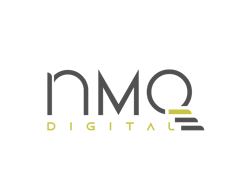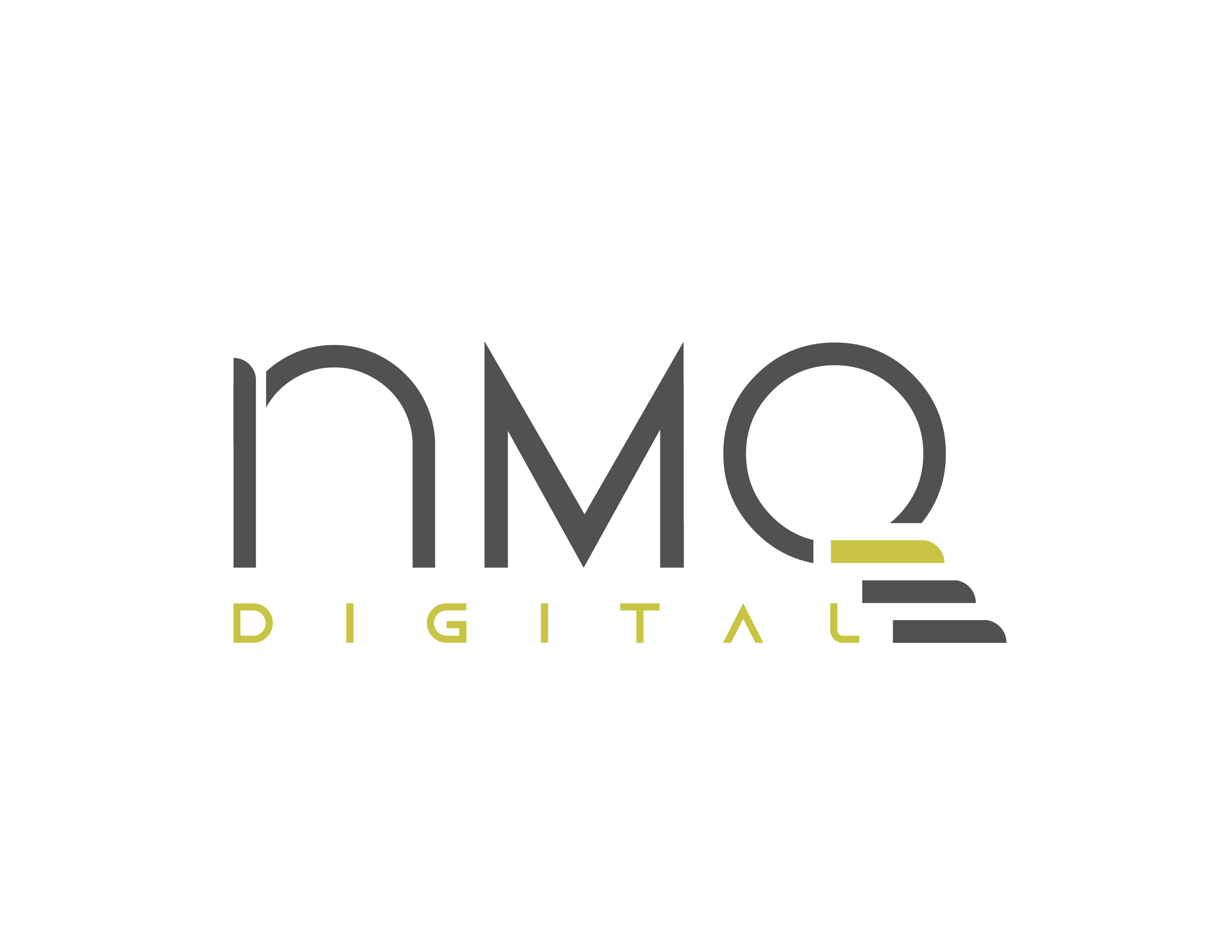Digital marketing uses digital channels, platforms, and technologies to promote products, services, or brands to a specific audience. It includes many online methods to connect with and involve customers through different digital platforms. Digital marketing includes SEO, social media marketing, email marketing, content marketing, PPC advertising, and more.
Digital marketing helps businesses analyze campaign performance in real-time, making data-driven decisions and improving marketing efforts. In this blog we will focus on;
- What is Digital Marketing?
- What are the Benefits of Digital Marketing?
- What does Digital Marketing mean for B2C Businesses?
- What does Digital Marketing mean for B2B Businesses?
- What are the most effective Digital Marketing Strategies?
1: What is Digital Marketing?
Digital marketing is a dynamic online strategy that utilizes internet channels to promote products, services, or brands, distinguishing itself from traditional methods.
By instantly connecting businesses with their target audience, analyzing performance data, and allowing precise targeting, digital marketing enables customization and effective communication.
Moreover, digital marketing transforms advertising models by offering cost-effective solutions, enhanced measurability, and greater adaptability.
As traditional methods are complemented or replaced, businesses can swiftly respond to consumer behavior changes and stay ahead in the fast-paced, interconnected business landscape.
As it is, digital marketing is growing fast. According to Wordstream, the compound annual growth rate of digital marketing from 2020-2026 is projected at 9%, while the growth rate between 2020-2021 was around 14%.
When it comes to budget allocation between digital and non-digital, 72% of overall marketing budgets get put towards digital marketing channels.
Hence, embracing digital marketing is no longer optional but a strategic imperative for success in today's dynamic environment.
2: Benefits of Digital Marketing
In today's business world, it's crucial for companies to use modern strategies for promoting their brand and connecting with customers.
Thanks to technology, digital marketing has become a game-changer, providing unique ways for businesses to engage with their target audience. Navigating the digital landscape and establishing a strong online presence is essential for success.
By embracing digital marketing, companies can not only survive but also thrive in an environment where staying adaptable and relevant is vital.
The benefits of digital marketing are numerous and play a crucial role in the success of modern businesses.
- Targeted Reach and Personalization
Digital marketing allows targeting specific demographics, ensuring marketing messages reach the right audience effectively.
Through data analytics, it is possible to personalize content, tailoring it to individual preferences, behaviors, and interests. This targeted approach enhances engagement and fosters a more meaningful connection between businesses and consumers. - Cost-Effectiveness and Measurability
Another benefit of digital marketing is that compared to traditional advertising methods, it offers a cost-effective alternative. You can optimize ad spend based on performance data in real-time, maximizing return on investment.
You can measure digital marketing campaigns to track important data like clicks, impressions, and conversions. This helps businesses make better decisions and improve their strategies. - Global Presence and Accessibility
Digital marketing helps you go global without needing physical locations, which is a major advantage.
Online platforms facilitate accessibility, allowing consumers from different parts of the world to interact with brands. This expansive reach not only increases brand visibility but also opens new avenues for growth and customer acquisition.
- Real-Time Engagement and Interaction
Digital marketing lets you instantly connect with your audience, making it a significant advantage of this marketing approach.
Social media, instant messaging, and email campaigns facilitate direct interaction, allowing for instant feedback, addressing customer queries promptly, and building relationships. This real-time engagement contributes to customer satisfaction and loyalty.
- Adaptability and Agility
In a rapidly changing digital environment, you need to stay agile. One key advantage of digital marketing is its quick ability to change strategies and adapt to new trends in online consumer behavior.
This adaptability ensures that you remain relevant and competitive, a stark contrast to the slower response times associated with traditional marketing approaches.
In conclusion, using digital marketing—focused on online strategies—brings various advantages like reaching specific audiences, cost-effectiveness, global access, immediate engagement, and flexibility.
Leveraging these benefits will help you succeed in today's business environment by connecting with your audiences more meaningfully and efficiently.
3: Digital Marketing for B2C Businesses
B2C, or business-to-consumer, is like the direct relationship between a store and its customers. It's when companies sell their products or services directly to everyday consumers.
Think of your favorite online shopping platform or grabbing something from the local grocery store – those are classic B2C experiences. It's all about making sure the end customer gets what they need, whether it's the latest gadget, a comfy pair of shoes, or their favorite snacks.

However, nowadays with everyone glued to screens and smartphones becoming an extra limb, businesses need to ride this digital wave to stay in the game. According to Searchlogistics, an average consumer spends about 4.2 hours per day on mobile.
Technology has flipped the script on how people discover, shop, and decide what to buy. If your business isn't vibing with the online scene, you might miss the party. It's not just about having a website; it's about being where your customers are.
Hence, adapting to digital marketing isn't just a trend; it's survival. Your customers are scrolling, searching, and clicking – you want to be right there with them, making waves in the digital sea of possibilities.
If you are now asking what are the gains for your B2C business to switch online, see below:
3:1: Digital marketing helps with targeted advertising and personalization
Personalization with the help of evolving technology is a key advantage for companies, enabling them to tailor marketing messages to individual preferences and create a more personalized and engaging customer experience.
According to Salesforce, 73% of customers expect better personalization as technology advances. Luckily, one of the benefits of digital marketing for B2C businesses is that it helps them to precisely target their audience based on demographics, interests, and online behavior.
A prime example of this would be Amazon's recommendation engine. By analyzing user behavior and purchase history, Amazon suggests products that align with individual preferences, significantly increasing the likelihood of conversion.
3:2: With Digital marketing, you can provide a better customer experience by seamlessly integrating with e-commerce platforms
Seamless integration with e-commerce platforms is another prime benefit of digital marketing, providing a frictionless path for customers from awareness to purchase.
According to Salesforce, 79% of customers expect consistent interactions across departments. And digital marketing is a perfect tool for especially B2C businesses to optimize their online presence, ensuring a smooth and convenient customer journey.
A successful digital marketing example of that would be Allbirds, the sustainable footwear brand, which seamlessly integrated with the Shopify platform to create a successful and user-friendly e-commerce experience.
Shopify's robust e-commerce features allow Allbirds to showcase its eco-friendly products, provide detailed product information, and offer a smooth purchasing process.
With Shopify's support, Allbirds can efficiently manage its online store, from inventory management to order fulfillment, ensuring a seamless and successful e-commerce integration that aligns with its brand ethos and resonates well with environmentally conscious consumers.
3:3: Digital marketing helps enhance brand visibility with social media engagement and influencer marketing
Social media is a powerful tool to engage with the target audience directly, which presents another benefit for B2C companies. Influencer marketing, where influential individuals promote products, enhances brand visibility and credibility.
According to a study by Statista, influencer marketing was found to yield the highest return on investment (ROI), but 67% projected that by 2030, social media advertising would be the most effective channel.
One of the brands that successfully implements digital marketing tools and benefits from social media is Fashion Nova, a fast-fashion retailer, that leverages Instagram influencers to showcase their clothing. This strategy has helped the brand to succeed, with influencers authentically promoting products to their followers.
3:4: Digital marketing helps to increase customer retention using email marketing
Digital marketing includes email campaigns, a valuable tool for B2C businesses to nurture customer relationships. Email marketing can inform customers about new products, promotions, and personalized offers, contributing to customer retention.
According to Optinmonster, 59% of customers say marketing emails influence their purchase decisions and 80% of business professionals believe that email marketing increases customer retention.
A prime example of how email marketing can be used for customer loyalty would be Starbucks' personalized email campaigns, utilizing customer data to offer personalized recommendations and exclusive promotions. This approach strengthens customer loyalty and encourages repeat purchases.
3:5: With Digital marketing, you can make more informed decisions
For B2C businesses, the focus is on obtaining data about individual consumers. And with the help of Digital marketing, they can access rich data analytics, allowing them to measure campaign performance, understand customer behavior, and make data-driven decisions for continuous improvement.
One successful example would be Nike, which strategically employs data analytics to enhance customer engagement, optimize its supply chain, and refine athlete endorsement strategies.
By leveraging consumer data, Nike makes informed decisions to tailor product offerings, improve operational efficiency, and align brand partnerships with customer preferences, showcasing the power of data-driven insights in achieving sustained success in the retail industry.
In conclusion, digital marketing is instrumental in the success of B2C businesses by enabling targeted advertising, seamless e-commerce integration, social media engagement, personalized email marketing, and informed decision-making through data analytics.
Real-world examples, such as those from Amazon, Nike, Fashion Nova, and others showcase how successful digital marketing strategies have significantly increased sales for B2C companies, emphasizing the transformative impact of digital approaches in the consumer-oriented landscape.
4: Digital Marketing for B2B Businesses
B2B, or business-to-business, refers to commercial transactions that occur between two businesses rather than involving individual consumers.
In this context, businesses act as both buyers and sellers, engaging in transactions that typically involve larger quantities of products, services, or specialized solutions.
B2B interactions often focus on meeting the unique needs and demands of businesses, forging partnerships, and fostering long-term relationships to drive mutual growth and success.

In the rapidly evolving landscape of B2B, digital marketing has emerged as an indispensable catalyst for growth and success.
Digital marketing strategies tailored for B2B businesses go beyond conventional approaches, leveraging the power of online platforms, data analytics, and targeted communication to connect with decision-makers, foster meaningful relationships, and drive business outcomes.
So, if you are wondering how B2B companies can leverage digital marketing, here are a couple samples;
4:1: Digital marketing helps to address specific audience pains with in-depth content marketing
B2B buyers seek comprehensive information. Developing in-depth content that addresses the specific pain points and challenges of the B2B audience, such as whitepapers, case studies, and industry reports, can position a company as an industry leader.
According to Searchlogistics, B2B blogs with educational content get 52% more organic traffic than B2B blogs with company-focused content.
One of the successful brands in terms of content marketing would be Adobe, a notable B2B brand that excels in in-depth content marketing. Adobe has developed a comprehensive content marketing strategy that goes beyond product promotion to establish the company as a thought leader in the creative industry.
Through their blog, tutorials, whitepapers, and webinars, Adobe provides valuable insights, industry trends, and educational resources for professionals in design, photography, video editing, and other creative fields. This in-depth content not only showcases Adobe's expertise but also engages and educates its B2B audience, contributing to a stronger brand presence and customer loyalty.
Another prime example would be HubSpot, whose comprehensive content marketing strategy, including blogs, webinars, and downloadable resources, has positioned them as a go-to resource for B2B marketers. This has resulted in increased lead generation and customer loyalty.
4:2: Digital marketing helps B2B companies connect with decision-makers via thought leadership on social media platforms
Establishing thought leadership on platforms like LinkedIn can help B2B companies connect with decision-makers, providing valuable insights and fostering credibility. You can utilize it for targeted advertising, content sharing, and networking.
In fact, according to Searchlogistics, 66% of marketers use social media to generate new business leads.
Salesforce is a prime example of a B2B brand that excels in social media engagement for thought leadership.
Salesforce leverages platforms like LinkedIn, Twitter, and YouTube to share valuable insights, industry trends, and thought-provoking content related to customer relationship management (CRM), cloud computing, and technology innovation.
Through regular posting, participation in industry discussions, and sharing informative content, Salesforce has established itself as a thought leader in the B2B space.
4:3: Digital marketing empowers Account-Based Marketing (ABM)
ABM tailors marketing efforts to specific high-value accounts, allowing for personalized communication and relationship-building with key decision-makers. This can involve targeted advertising, personalized content, and direct outreach to key decision-makers.
A notable example of a B2B brand excelling in Account-Based Marketing (ABM) is Terminus. Terminus is a platform specifically designed for ABM, and its marketing practices reflect a strong commitment to this strategy.
Terminus uses personalized and targeted campaigns to engage key decision-makers within specific target accounts.
Through a combination of precise ad targeting, personalized content, and coordinated outreach, Terminus effectively demonstrates the power of ABM in reaching and nurturing high-value B2B accounts.
In navigating the unique challenges and opportunities of B2B digital marketing, these tailored strategies and successful examples showcase the effectiveness of a nuanced and targeted approach in lead generation and relationship-building within the B2B landscape.
5: Most Effective Digital Marketing Strategies
In the dynamic landscape of digital marketing, staying ahead requires a keen understanding of the most effective strategies that transcend industry boundaries and captivate today's online audiences.
Now let us explore the most impactful digital marketing strategies to increase brand visibility, foster audience engagement, and drive tangible results in an ever-evolving digital realm.
- Personalization and AI
- Conversational Marketing
- SEO
- Social Media
- Email Marketing
- Video Marketing
- Interactive Content marketing
- Mobile Marketing
- Augmented Reality (AR) and Virtual Reality (VR)
- Data Privacy and Transparency
5:1: Personalization and AI
The intersection of artificial intelligence (AI) and personalization is reshaping digital strategies to meet the growing demand for tailored experiences.
AI's impact on personalization is undeniable, with advanced algorithms analyzing vast datasets to inform hyper-targeted content, predictive recommendations, and seamless user journeys.
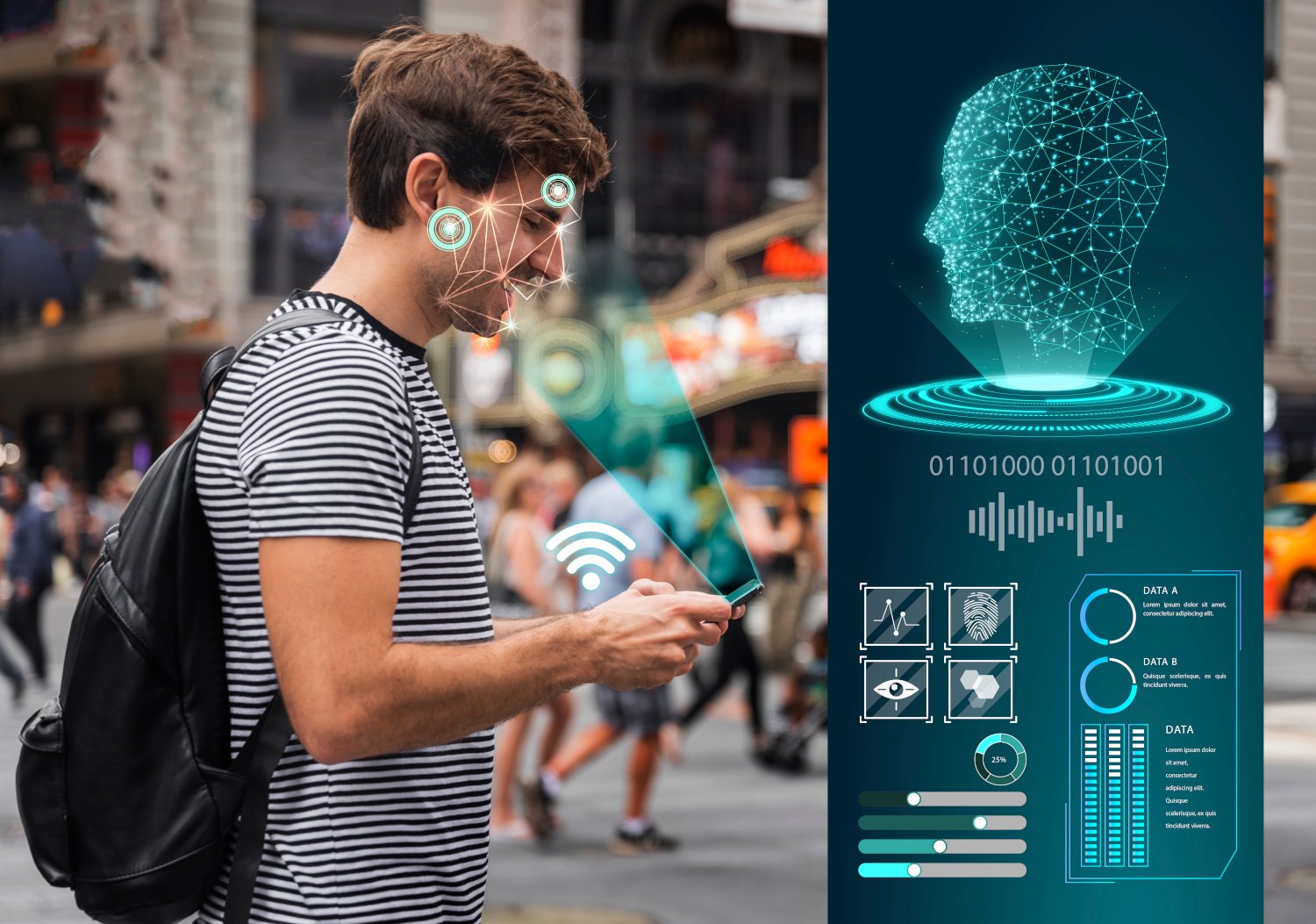
According to Statista,
- 73% of customers expect better personalization as technology advances.
- 65% of customers expect companies to adapt to their changing needs and preferences
So, consumers expect more individualized interactions, and adopting personalized approaches in your digital marketing endeavors is a must.
In addition to that, personalization with the help of AI allows you;
- To tailor your interactions with customers, delivering content, products, and recommendations that align with individual preferences.
- To enhance customer satisfaction by understanding their preferences and needs
- To increase conversion rates by presenting your users with relevant content and product recommendations.
One of the prime examples of effective personalization in the digital marketing landscape is Spotify.
The music streaming service employs advanced algorithms to analyze user listening habits, track preferences, and even consider factors such as time of day and location. This data is then utilized to curate personalized playlists, such as Discover Weekly and Daily Mixes, tailored to each user's unique taste in music.
The "Made For You" section on Spotify's homepage showcases these personalized playlists, introducing users to new songs and artists while keeping the listening experience highly individualized. Moreover, the platform provides users with the ability to like or dislike songs, enabling the algorithm to continuously refine and improve its recommendations over time.
As can be seen in the example, using personalization and AI to create a more tailored and satisfying experience for users is crucial to ultimately contribute to business success and growth.
5:2: Conversational Marketing
Conversational marketing involves real-time, one-to-one connections between marketers and customers through channels like chatbots, messaging apps, and live chat.
Businesses are integrating chatbots on websites and social media to provide instant responses, personalized recommendations, and assistance, enhancing the customer experience.
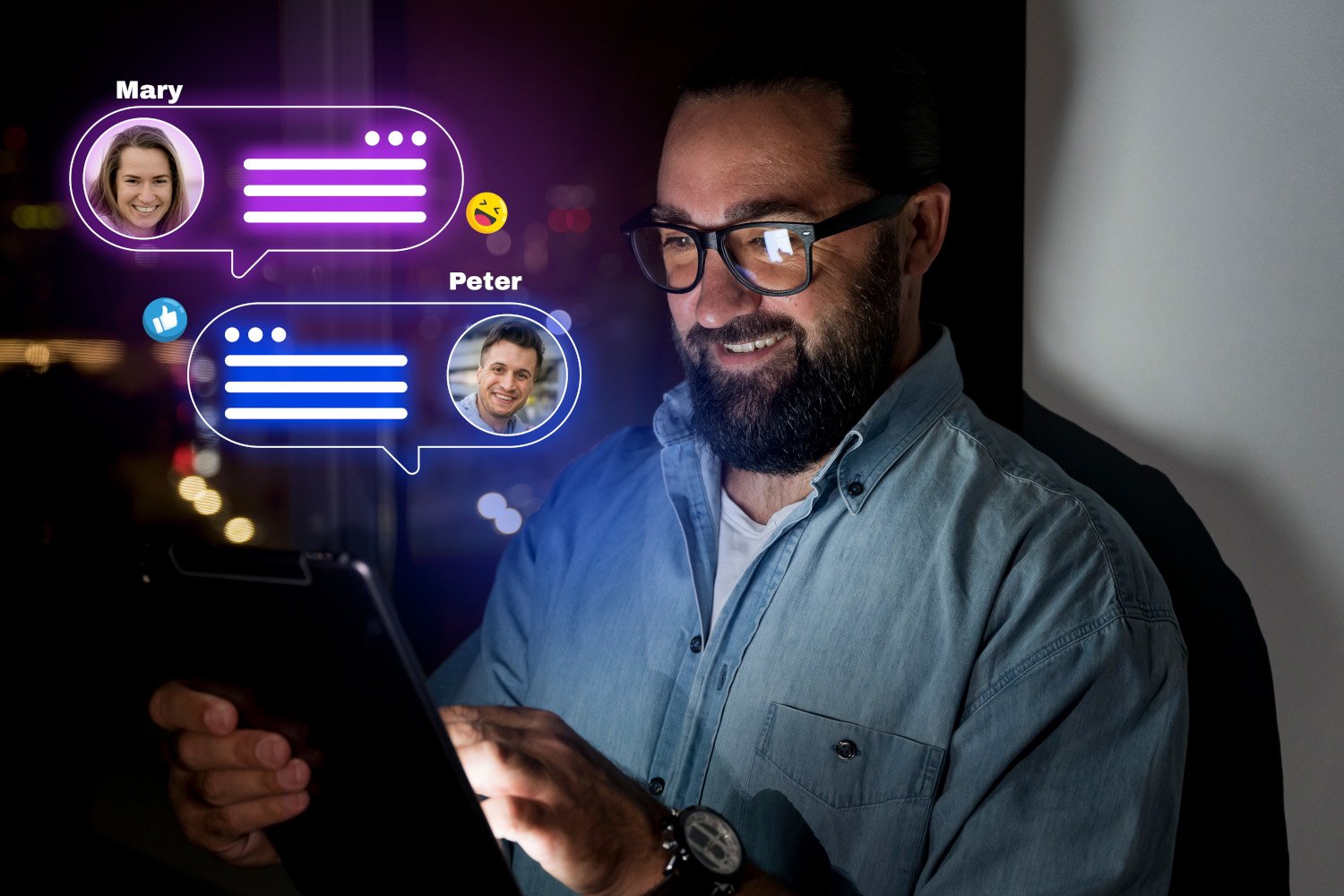
If we look at customers' expectations when it comes to conversational marketing,
- According to a study by Drift, 53% of consumers are more likely to purchase from a company they can message directly. (Martechseries)
- HubSpot found that companies that use chatbots for customer service see a 67% increase in leads. (Martechseries)
- A report by Twilio found that 9 out of 10 consumers want to be able to use messaging to communicate with businesses. (Martechseries)
And conversational marketing is an excellent way to answer the needs of your customers. It also helps you to;
- Have immediate and real-time interactions with potential customers so you can address any queries quickly, provide information, and guide prospects through the sales funnel, increasing the likelihood of conversions.
- Deliver personalized experiences tailored to individual user preferences utilizing chatbots, live chat, and other conversational tools.
- Enable the qualification of leads through natural, ongoing conversations.
- Achieve higher conversion rates by addressing user concerns promptly, providing relevant information, and guiding users through the decision-making process.
For example, one prime brand that excels in conversational marketing is Sephora through its mobile app, where it employs a dynamic chatbot to engage users in real-time conversations.
The chatbot assists customers with product recommendations, beauty tips, and answers to queries. By offering personalized interactions, Sephora creates a more engaging and tailored shopping experience.
So, to sum up, conversational marketing is one of the strategies that you can use to make more personalized connections with your users and customers.
5:3: Search Engine Optimization (SEO)
SEO involves optimizing online content to improve its visibility in search engine results, thereby driving organic traffic to a website.
Marketers are focusing on understanding and optimizing for user search intent to enhance the relevance of content in search engine results.

According to Semrush, less than 1% of searchers click on the second page of Google results (Backlinko, 2023)
Hence, businesses are creating content that aligns with specific search intents, addressing user queries, and providing valuable information to improve search engine rankings.
While there are many SEO strategies available for the needs of different businesses, especially PPC Advertising and Voice Search Optimization is taking the lead there.
a) Pay-Per-Click Advertising (PPC)
PPC involves placing online ads and paying only when users click on them, providing a direct way to drive traffic and conversions.
According to Lunio, search ads increase brand awareness by as much as 80% (WordStream, 2023).

With PPC, you can;
- Get instant visibility on search engines and other platforms, and generate traffic to your website, especially for timely promotions, product launches, or events.
- Make precise targeting based on keywords, demographics, and user behavior and reach a highly specific audience, ensuring that your ads are shown to users most likely to be interested in your products or services.
- Measure and track your results, like impressions, clicks, conversions, and other key metrics, providing valuable data for optimizing campaigns and measuring return on investment (ROI).
- Control your budget and spending on a daily or campaign basis. This level of control ensures that you can manage costs effectively and adjust budgets based on campaign performance and goals.
- Quickly adjust and customize your campaigns to meet changing needs. You can experiment with different ad copy, keywords, and targeting options, adapting your strategy to evolving market conditions or promotional objectives.
For example, Airbnb effectively uses PPC advertising to reach users searching for accommodation. Their ads are strategically placed, featuring high-quality images and compelling copy, driving potential guests to their platform.
b) Voice Search Optimization
According to Semrush, 62% of Americans use voice assistants.
With the increasing use of voice-activated devices, businesses are optimizing their content for voice search queries.
That makes voice search optimization increasingly important and means you need to adjust your SEO strategies to incorporate long-tail keywords and conversational phrases that align with how users speak during voice searches.
For example, you can focus on conversational keywords and provide concise, informative answers to voice queries, such as “best”, “easy”, “free”, “top” etc., or “near me” for local searches.

Wİth voice search, you can;
- Improve user experience by providing a hands-free and convenient way to access information. Users can simply speak their queries, making the interaction more natural and efficient, especially in situations where typing is impractical.
- Increase your website traffic, because when your content aligns with the queries users make through voice search, it's more likely to be surfaced as a relevant result, driving organic traffic to your site.
- Have better local search visibility as voice searches often have a local intent, such as finding nearby businesses or services.
Remember, incorporating voice search optimization into your overall SEO strategy is a forward-thinking approach that not only enhances your online presence but also ensures that your business remains relevant and accessible in the evolving landscape of search.
For further information on voice search optimization, you can check our voice search optimization blog page to learn more about upcoming trends and best practices for your site, or you can go to the SEO page if you want to know more about SEO and our services.
5:4: Social Media Marketing
You can leverage social media platforms to connect with the target audience, build brand awareness, and drive engagement.
According to Statista,
- Since 2021, more than half of the global population has been active on at least one social media platform.
- Globally, the average social media user engages with social media for two hours and 31 minutes each day, with much of that time spent on mobile devices.
Keeping those numbers in mind, it is crucial to have a solid social media strategy and presence online.
For example, Nike's social media presence is exemplary. Through visually compelling content, storytelling, and active engagement on platforms like Instagram and Twitter, Nike has cultivated a massive and engaged online community.
Of course, social media is a big domain, with its channels and different strategies you can apply for each different channel.
When we look at trending strategies, especially influencer marketing and social commerce seem to stand out in the last couple of years.
a) Influencer Marketing
Influencer marketing means collaborating with influential individuals to promote your products or services, leveraging your reach and credibility.
It is evolving with a shift toward micro and nano influencers, emphasizing authenticity and niche audience targeting.

With influencer marketing, you can;
- Increase reach and visibility by partnering with influencers who have a certain number of followers and tapping into their audience, hence extending the reach of your message to a broader and potentially untapped market.
- Add authenticity and increase credibility for your brand. When an influencer promotes a product or service, it can be perceived as a genuine recommendation rather than a traditional advertisement.
- You can ensure that your message resonates with the right audience, leading to more meaningful engagement and potential conversions by selecting influencers whose followers align with your target audience's demographic.
- Promote your brand in a more cost-effective way compared to traditional advertising methods. Instead of investing heavily in traditional advertising channels, you can achieve a higher return on investment (ROI) through the authenticity and trust associated with influencer endorsements.
According to Sproutsocial, nano-influencers, or influencers with less than 10,000 followers, have the highest engagement rate at 2.5%.
Hence, brands are collaborating with niche influencers who have smaller but highly engaged followers, resulting in more genuine connections and increased trust.
For example, fashion brand Daniel Wellington partnered with influencers to showcase their watches on social media. This strategy led to a significant increase in brand awareness and sales, especially among younger demographics.
b) Social Commerce Integration
Social commerce integration involves leveraging social media platforms for e-commerce activities, hence social media platforms are becoming e-commerce hubs, allowing users to discover and purchase products directly within the social environment.
According to Statista, a study conducted in August 2023 revealed that Facebook is the top social network for shopping in the U.S. with 20%, Instagram following with 12% and YouTube with 9%.
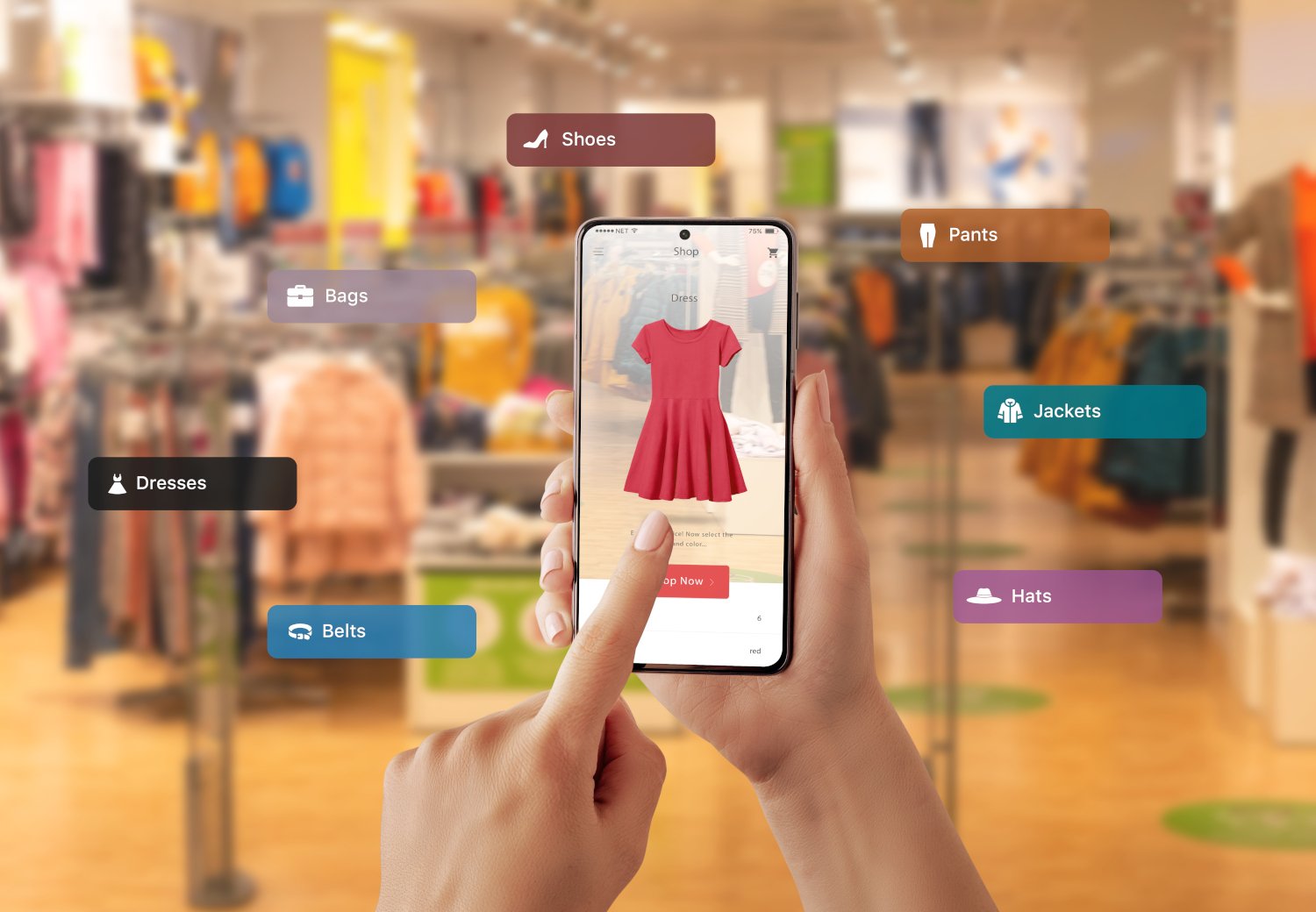
By providing a seamless social commerce integration, you can;
- Tap into the vast user bases of popular social media platforms by integrating e-commerce functionality directly within these platforms and extend your reach to potential customers who are actively engaging on social media.
- Provide a seamless shopping experience by allowing your users to discover, browse, and purchase your products directly within their favorite social media apps.
- Partner with influencers to promote products, while individuals can share their purchases and opinions on social media in the form of user-generated content, building trust through authentic experiences.
- Have real-time engagement with your customers as social commerce enables direct interaction with customers through comments, likes, and shares.
For example, Instagram's "Shoppable Posts" feature enables businesses to tag products in posts, allowing users to explore and purchase items without leaving the app.
As social media continues to play a central role in people's online activities, social commerce integration becomes increasingly important for businesses aiming to stay competitive in the digital marketplace.
If you want to know more about social media commerce, you can check our blog the power of social commerce or, you can go to our Social Media page to learn more about social media and our services.
5:5: Email Marketing
Email marketing is a powerful tool for businesses to connect with their audience, delivering personalized messages and promotions directly to their inbox, fostering engagement and brand loyalty.
By sending targeted and personalized emails to a segmented audience, you can nurture leads, promote products, and build customer relationships.
According to HubSpot, 77% of marketers have seen an increase in email engagement over the last 12 months.

If you have a sound email marketing strategy, you can,
- Send targeted messages to specific segments of your audience by personalizing the content based on user preferences and behaviors.
- Reach a large audience at a relatively low cost, and track and measure results that contribute to a high return on investment (ROI).
- Automate your efforts for setting up drip campaigns, welcome sequences, and other workflows and hence engage with your audience without constant manual intervention.
- Have a direct and personal channel for communication between yourself and your audience and hence build brand loyalty.
For example, Airbnb, again, uses email marketing to enhance user experience. Their personalized emails provide recommendations based on previous bookings, encouraging repeat business and engagement.
So, with email marketing, you can reach your customers efficiently, share valuable content, and drive conversions through targeted and well-crafted email campaigns.
If you would like to know more about email marketing, you can either check the fundamentals of email marketing or go to our Email marketing service page.
5:6 Video Marketing
Video content continues to dominate digital marketing, with a focus on short-form videos, live streaming, and interactive video experiences. Platforms like TikTok and Instagram Reels are being used by businesses for creative and engaging short-form video content to connect with younger audiences.
According to Dash.app, 96% of marketers say video is an important part of their marketing strategy. And if we consider that a person watches an average of 17 hours of online video per week, we can understand why.

With effective video marketing, you can;
- Capture the audience's attention more effectively than text or images alone, leading to higher click-through rates, longer on-page dwell times, and increased social media interactions.
- Improve your SEO and visibility as search engines prioritize video content, and websites with video often rank higher in search results.
- Enhance brand awareness as videos allow you to showcase your brand personality, tell compelling stories, and create memorable experiences for your audience.
For example, Dollar Shave Club became widely recognized for its humorous and attention-grabbing promotional videos.
Their marketing approach, often featuring the company's founder, combined humor, clear messaging, and a distinctive brand personality, resonating well with their target audience. These videos went viral, helping Dollar Shave Club build brand awareness and acquire a significant customer base.
You can watch one of these videos here.
5:7 Interactive Content Marketing
Content marketing focuses on creating and distributing valuable, relevant, and consistent content to attract and retain a target audience.
Interactive content, such as quizzes, polls, and interactive infographics, is gaining popularity for engaging audiences and encouraging participation.
According to Outgrow, interactive content sees 52.6% higher engagement than static content.
hence, brands use interactive quizzes on social media or websites to involve users, gather insights, and create a more interactive brand experience.

With carefully crafted and executed content marketing, you can;
- Increase your brand visibility and awareness by consistently providing valuable information, to your audience and increase brand visibility, making your presence known to a wider audience.
- Establish authority and thought leadership by showcasing your expertise in a particular industry or niche.
- Generate leads and acquire new customers by creating content that addresses the needs and challenges of potential customers, and attracting and nurturing leads, ultimately leading to customer acquisition.
- Foster customer loyalty and retention by consistently delivering valuable content.
- Improve your online visibility and SEO by creating High-quality, relevant content that is favored by search engines, contributing to better search rankings.
For example, Red Bull's content marketing strategy extends beyond energy drinks. Their online magazine, "Red Bull Media House," produces high-quality content related to extreme sports, music, and culture, creating a lifestyle brand and increasing customer engagement.
5:8: Mobile Marketing
Mobile marketing is a digital marketing strategy focused on reaching and engaging audiences through mobile devices such as smartphones and tablets.
It leverages the unique features of mobile devices, such as push notifications, geotargeting, and mobile-optimized content, to deliver personalized and contextually relevant messages to users on the go.
As mobile usage continues to rise globally, mobile marketing has become essential for businesses seeking to connect with their target audience in a highly accessible and interactive manner, driving brand awareness, customer engagement, and conversions through the mobile channel.
According to Webfx, 52.2 percent of all website traffic is generated from mobile phones.
61% of consumers say they are more likely to purchase from mobile-friendly sites

With mobile marketing, you can;
- Reach a vast audience, ensuring accessibility to potential customers anytime, anywhere.
- Create personalized and targeted marketing campaigns, improving the relevance of content and increasing engagement.
- Engage with users in real-time, delivering time-sensitive promotions, updates, and information.
- Access location data and launch targeted marketing based on a user's geographical location, such as offers, promotions, or information.
- Provide a seamless user experience with interactive and user-friendly mobile platforms, encouraging actions such as purchases, sign-ups, or other conversions.
For example, Starbucks' mobile app seamlessly integrates with its loyalty program, allowing users to order and pay through the app. This mobile-centric approach has boosted customer loyalty and convenience.
5:9: Augmented Reality (AR) and Virtual Reality (VR)
Augmented Reality (AR) and Virtual Reality (VR) play pivotal roles in digital marketing by revolutionizing user experiences and engagement.
AR enhances the real-world environment by overlaying digital information, allowing brands to create interactive and immersive campaigns. This technology can be leveraged for product visualizations, virtual try-ons, and interactive advertisements, providing consumers with a more engaging and personalized interaction.
On the other hand, VR offers a fully immersive, computer-generated environment, enabling marketers to transport users to virtual worlds for brand experiences, product demonstrations, and even virtual stores.
According to Threekit,
- 61% of consumers say they prefer retailers with AR experiences.
- AR product experiences are 200% more engaging as they deliver double levels of engagement compared to their non-AR equivalent.

Both AR and VR break traditional marketing boundaries by fostering deeper connections, increasing interactivity, and leaving lasting impressions on consumers, ultimately driving brand loyalty and influencing purchasing decisions in the digital landscape.
In addition to these, with AR and VR technologies in your marketing, you can;
- Significantly enhance user engagement by providing your users with a more captivating and realistic experience, leading to increased satisfaction.
- Leverage them for training and simulations, especially in industries such as healthcare, aviation, and manufacturing as they allow users to practice and learn in realistic environments without real-world consequences, improving skill development and decision-making.
- Use them for interactive product demonstrations, allowing customers to visualize products in their own environment and enhance the overall shopping and buying process.
For example, IKEA's "IKEA Place" app uses AR, allowing customers to visualize furniture in their homes before making a purchase, enhancing the online shopping experience.
These benefits demonstrate the versatility and potential impact of AR and VR across various sectors. As technology continues to advance, we can expect even more innovative applications and improvements in user experiences.
5:10: Data Privacy and Transparency
Finally, let us not forget Data.
With increasing concerns about data privacy, ethical marketing practices are vital. Building trust by being transparent about data usage and respecting user privacy preferences is key.
For that reason, companies are transparently communicating their data usage policies and obtaining explicit consent, building trust with consumers who are more mindful of their online privacy.

Data privacy and transparency are crucial aspects of responsible data management and contribute to building trust with users and customers. With a solid data privacy and transparency, you can;
- Build trust by demonstrating a commitment to data privacy and being transparent about how user data is collected, stored, and utilized.
- Comply with regulations by adhering to data privacy regulations and standards, such as GDPR, CCPA, or other regional laws.
- Enhance customer confidence by handling customer information with care and in accordance with privacy standards. This is particularly important for businesses that rely on accurate customer information for personalized services and marketing.
- Mitigate security risks by prioritizing data privacy and maintaining a secure environment.
- Have a positive brand reputation which can lead to customer loyalty, positive word-of-mouth, and an overall favorable perception in the market.
One good example of that would be Apple Inc. It stands out as a brand committed to data privacy and transparency, evident through initiatives such as privacy labels in the App Store and the implementation of App Tracking Transparency (ATT).
In summary, prioritizing data privacy and transparency is not only an ethical imperative but also a strategic advantage for businesses.
To sum it all, the key takeaway from our exploration of digital marketing strategies lies in the versatility and measurable impact these approaches offer.
With the precision of SEO, the engaging power of content and social media marketing, targeted reach of PPC, and the personalized touch of email campaigns, businesses have a comprehensive toolkit at their disposal.
Embracing these strategies is not merely an option but a strategic need for businesses aspiring to achieve sustainable growth in the digital era.
If you would like to know more about digital marketing strategies and how you can apply them for your business, you can check our Digital Consultancy services.
